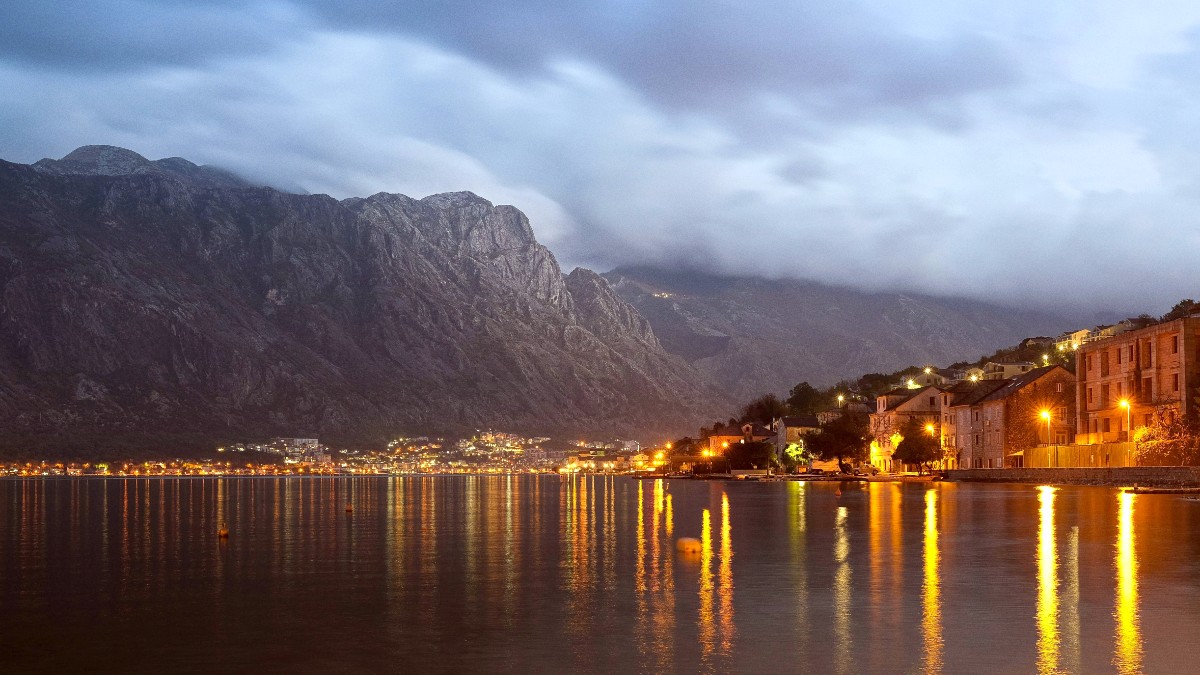
Montenegro
Meat (lamb, veal, pork, Njeguški pršut), Dairy (kajmak, local cheeses), Seafood (fresh fish, squid, mussels), Vegetables (potatoes, cabbage, tomatoes), Herbs (rosemary, bay leaf), and Olive Oil.
The coastal region heavily Mediterranean-inspired dishes, with seafood, risottos, and pasta. The central/mountainous region has heartier, meat-focused dishes, richer dairy products, and grilled meats.
Cured ham from Njeguši village, known for its unique flavor.
Found everywhere, often as an appetizer with local cheese and olives.
Risotto made with cuttlefish ink, distinctive black color and deep, rich seafood flavor.
A coastal specialty, found in seafood restaurants.
Meat (lamb or veal) or octopus slow-cooked under a metal dome covered with hot coals.
Incredibly tender and flavorful. Many restaurants need advance ordering.
A rich, creamy, fermented dairy product, often with bread or grilled meats.
A rich and flavorful fish broth with various fish and vegetables. Coastal restaurants frequently feature this dish.
Mainly in luxury hotels or marinas, like Porto Montenegro in Tivat. Refined Montenegrin and international cuisine is present.
Konobas (traditional taverns) local cuisine. Many restaurants serve Montenegrin, Italian, and international dishes.
Pekaras (bakeries) for burek and pastries. Market stalls for fresh produce and snacks. Small cafes and grill stands.
Located just outside the Old Town walls, this daily market is a hub for fresh fruits, vegetables, local cheeses, smoked ham, and olive oil.
A fantastic place to observe local life and gather picnic supplies.
Italian cuisine is popular and widely available due to historical ties. Many pizzerias and pasta restaurants.
Some restaurants serve general European or other international dishes.
Great for breakfast or quick snacks.
Enjoy local coffee or refreshing beverages.
Seasonal options at market or small stands.
Fresh fruits and vegetables from markets.
Gluten-free options are not widely advertised, and cross-contamination can be a concern in smaller establishments.
Focus on naturally gluten-free foods like grilled meats, fresh fish, and salads. Communicate clearly.
Limited dedicated halal or kosher restaurants exist. Consider vegetarian or fish options, or prepare your own meals from market ingredients.
Self-catering accommodation a good option for specific dietary requirements.
Inform staff about severe allergies. Restaurants may or may not accommodate complex requests outside upscale establishments.
If you have specific needs, self-catering accommodation, with access to local markets, is a convenient option.
Some local tour operators or guesthouses offer informal cooking classes focused on Montenegrin dishes.
Tours exploring Kotor Old Town and its market. Taste local specialties and learn about their origins.
Visit local farms like cheese or olive oil producers in surrounding areas or on day trips (e.g., Njeguši village).
Dining at waterfront restaurants (konobas) in Perast or Dobrota features stunning views of the bay and islands, especially at sunset.
A perfect romantic setting.
Enjoying fresh seafood straight from local fishermen, often served simply grilled or "na buzaru" (in sauce).
Highlights the region's connection to the sea.
Guesthouses present a chance to interact with local hosts for dining recommendations.
Explore traditional konobas for authentic Montenegrin cuisine.
Waterfront dining in Perast or Dobrota offers stunning bay views.
Always check restaurant opening hours, especially during off-peak seasons, as some smaller places might have reduced hours or close.